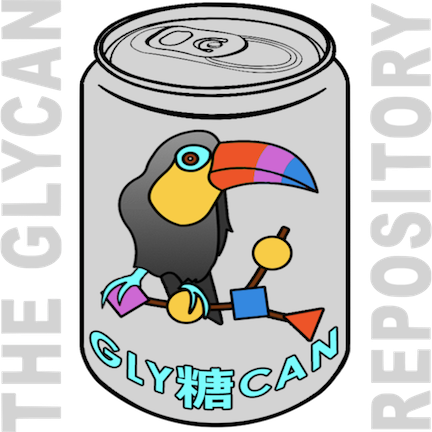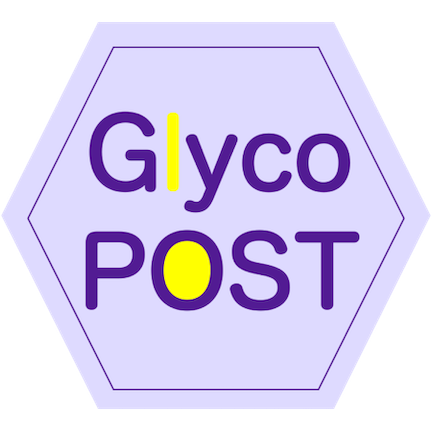|
Apolipoprotein E gene expression in mouse 3T3-L1 adipocytes and human adipose tissue and its regulation by differentiation and lipid content.
|
- Zechner R
- Moser R
- Newman TC
- Fried SK
- Breslow JL
|
1709937
|
J Biol Chem
|
1991
|
|
Apolipoprotein E containing high density lipoprotein stimulates endothelial production of heparan sulfate rich in biologically active heparin-like domains. A potential mechanism for the anti-atherogenic actions of vascular apolipoprotein e.
|
- Paka L
- Kako Y
- Obunike JC
- Pillarisetti S
|
9988721
|
J Biol Chem
|
1999
|
|
Apolipoprotein B production reduces lipotoxic cardiomyopathy: studies in heart-specific lipoprotein lipase transgenic mouse.
|
- Yokoyama M
- Yagyu H
- Hu Y
- Seo T
- Hirata K
- Homma S
- Goldberg IJ
|
14634011
|
J Biol Chem
|
2004
|
|
Apolipoprotein B is both integrated into and translocated across the endoplasmic reticulum membrane. Evidence for two functionally distinct pools.
|
- Davis RA
- Thrift RN
- Wu CC
- Howell KE
|
2161829
|
J Biol Chem
|
1990
|
|
Apolipoprotein AII is a regulator of very low density lipoprotein metabolism and insulin resistance.
|
- Castellani LW
- Nguyen CN
- Charugundla S
- Weinstein MM
- Doan CX
- Blaner WS
- Wongsiriroj N
- Lusis AJ
|
18160395
|
J Biol Chem
|
2008
|
|
Apolipoprotein A-V-heparin interactions: implications for plasma lipoprotein metabolism.
|
- Lookene A
- Beckstead JA
- Nilsson S
- Olivecrona G
- Ryan RO
|
15878877
|
J Biol Chem
|
2005
|
|
Apolipoprotein A-IV reduces hepatic gluconeogenesis through nuclear receptor NR1D1.
|
- Li X
- Xu M
- Wang F
- Kohan AB
- Haas MK
- Yang Q
- Lou D
- Obici S
- Davidson WS
- Tso P
|
24311788
|
J Biol Chem
|
2014
|
|
Apolipoprotein A-I regulates lipid hydrolysis by hepatic lipase.
|
- Ramsamy TA
- Neville TA
- Chauhan BM
- Aggarwal D
- Sparks DL
|
10944531
|
J Biol Chem
|
2000
|
|
Apolipoprotein A-I modulates regulatory T cells in autoimmune LDLr-/-, ApoA-I-/- mice.
|
- Wilhelm AJ
- Zabalawi M
- Owen JS
- Shah D
- Grayson JM
- Major AS
- Bhat S
- Gibbs DP Jr
- Thomas MJ
- Sorci-Thomas MG
|
20833724
|
J Biol Chem
|
2010
|
|
Apolipoprotein A-I domains involved in the activation of lecithin:cholesterol acyltransferase. Importance of the central domain.
|
- Meng QH
- Calabresi L
- Fruchart JC
- Marcel YL
|
7688720
|
J Biol Chem
|
1993
|
|
Apolipoprotein A-I conformation in reconstituted discoidal lipoproteins varying in phospholipid and cholesterol content.
|
- Bergeron J
- Frank PG
- Scales D
- Meng QH
- Castro G
- Marcel YL
|
7499199
|
J Biol Chem
|
1995
|
|
Apoe, Mbl2, and Psp plasma protein levels correlate with diabetic phenotype in NZO mice--an optimized rapid workflow for SRM-based quantification.
|
- von Toerne C
- Kahle M
- Schäfer A
- Ispiryan R
- Blindert M
- Hrabe De Angelis M
- Neschen S
- Ueffing M
- Hauck SM
|
23350727
|
J Proteome Res
|
2013
|
|
ApoO, a novel apolipoprotein, is an original glycoprotein up-regulated by diabetes in human heart.
|
- Lamant M
- Smih F
- Harmancey R
- Philip-Couderc P
- Pathak A
- Roncalli J
- Galinier M
- Collet X
- Massabuau P
- Senard JM
- Rouet P
|
16956892
|
J Biol Chem
|
2006
|
|
Apicoplast and endoplasmic reticulum cooperate in fatty acid biosynthesis in apicomplexan parasite Toxoplasma gondii.
|
- Ramakrishnan S
- Docampo MD
- Macrae JI
- Pujol FM
- Brooks CF
- van Dooren GG
- Hiltunen JK
- Kastaniotis AJ
- McConville MJ
- Striepen B
|
22179608
|
J Biol Chem
|
2012
|
|
Apicomplexan C-Mannosyltransferases Modify Thrombospondin Type I-containing Adhesins of the TRAP Family.
|
- Hoppe CM
- Albuquerque-Wendt A
- Bandini G
- Leon DR
- Shcherbakova A
- Buettner FFR
- Izquierdo L
- Costello CE
- Bakker H
- Routier FH
|
29432542
|
Glycobiology
|
2018
|
|
Apical transport and folding of prostate-specific membrane antigen occurs independent of glycan processing.
|
- Castelletti D
- Fracasso G
- Alfalah M
- Cingarlini S
- Colombatti M
- Naim HY
|
16221666
|
J Biol Chem
|
2006
|
|
Apical Golgi localization of N,N'-diacetyllactosediamine synthase, beta4GalNAc-T3, is responsible for LacdiNAc expression on gastric mucosa.
|
- Ikehara Y
- Sato T
- Niwa T
- Nakamura S
- Gotoh M
- Ikehara SK
- Kiyohara K
- Aoki C
- Iwai T
- Nakanishi H
- Hirabayashi J
- Tatematsu M
- Narimatsu H
|
16728562
|
Glycobiology
|
2006
|
|
Apelin-36 Modulates Blood Glucose and Body Weight Independently of Canonical APJ Receptor Signaling.
|
- Galon-Tilleman H
- Yang H
- Bednarek MA
- Spurlock SM
- Paavola KJ
- Ko B
- To C
- Luo J
- Tian H
- Jermutus L
- Grimsby J
- Rondinone CM
- Konkar A
- Kaplan DD
|
27994053
|
J Biol Chem
|
2017
|
|
Antitumor quinol PMX464 is a cytocidal anti-trypanosomal inhibitor targeting trypanothione metabolism.
|
- König J
- Wyllie S
- Wells G
- Stevens MF
- Wyatt PG
- Fairlamb AH
|
21212280
|
J Biol Chem
|
2011
|
|
Antitumor properties of a new non-anticoagulant heparin analog from the mollusk Nodipecten nodosus: Effect on P-selectin, heparanase, metastasis and cellular recruitment.
|
- Gomes AM
- Kozlowski EO
- Borsig L
- Teixeira FC
- Vlodavsky I
- Pavão MS
|
25367817
|
Glycobiology
|
2015
|
|
Antitumor polysaccharides from P. ostreatus (Fr.) Quél.: isolation and structure of a beta-glucan.
|
- Yoshioka Y
- Tabeta R
- Saitô H
- Uehara N
- Fukuoka F
|
4053098
|
Carbohydr Res
|
1985
|
|
Antitumor effects of hyaluronic acid inhibitor 4-methylumbelliferone in an orthotopic hepatocellular carcinoma model in mice.
|
- Piccioni F
- Malvicini M
- Garcia MG
- Rodriguez A
- Atorrasagasti C
- Kippes N
- Piedra Buena IT
- Rizzo MM
- Bayo J
- Aquino J
- Viola M
- Passi A
- Alaniz L
- Mazzolini G
|
22038477
|
Glycobiology
|
2012
|
|
Antithrombin-mediated anticoagulant activity of sulfated polysaccharides: different mechanisms for heparin and sulfated galactans.
|
- Melo FR
- Pereira MS
- Foguel D
- Mourão PA
|
14996843
|
J Biol Chem
|
2004
|
|
Antithrombin-binding oligosaccharides: structural diversities in a unique function?
|
- Guerrini M
- Mourier PA
- Torri G
- Viskov C
|
25145542
|
Glycoconj J
|
2014
|
|
Antithrombin-binding octasaccharides and role of extensions of the active pentasaccharide sequence in the specificity and strength of interaction. Evidence for very high affinity induced by an unusual glucuronic acid residue.
|
- Guerrini M
- Guglieri S
- Casu B
- Torri G
- Mourier P
- Boudier C
- Viskov C
|
18640975
|
J Biol Chem
|
2008
|







